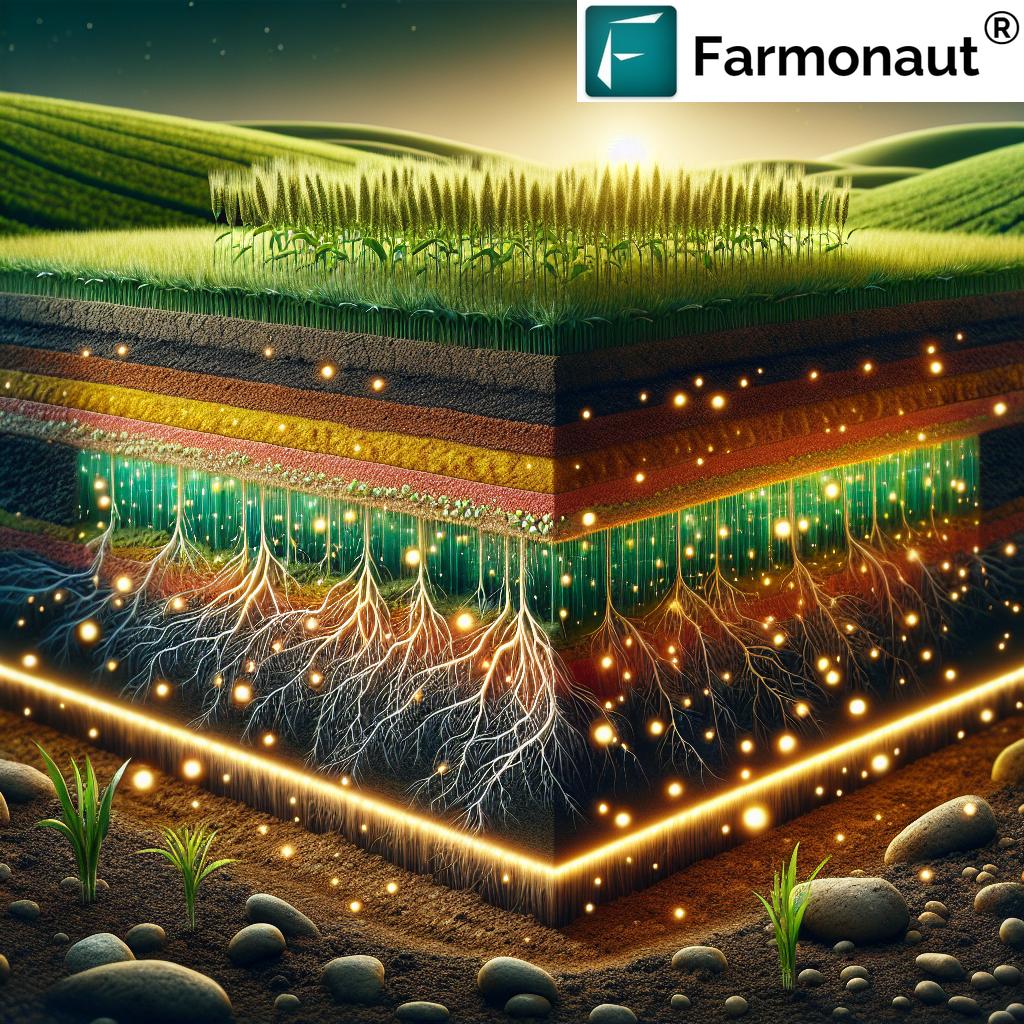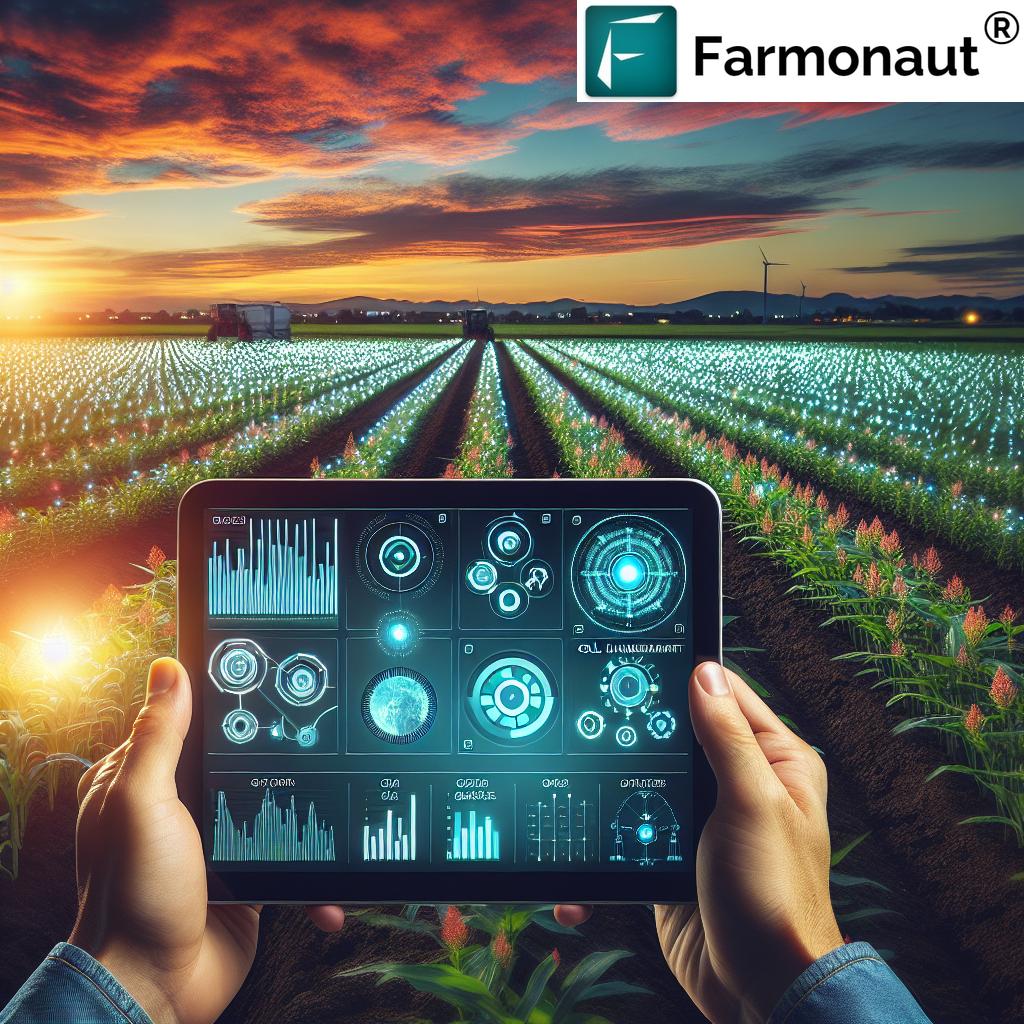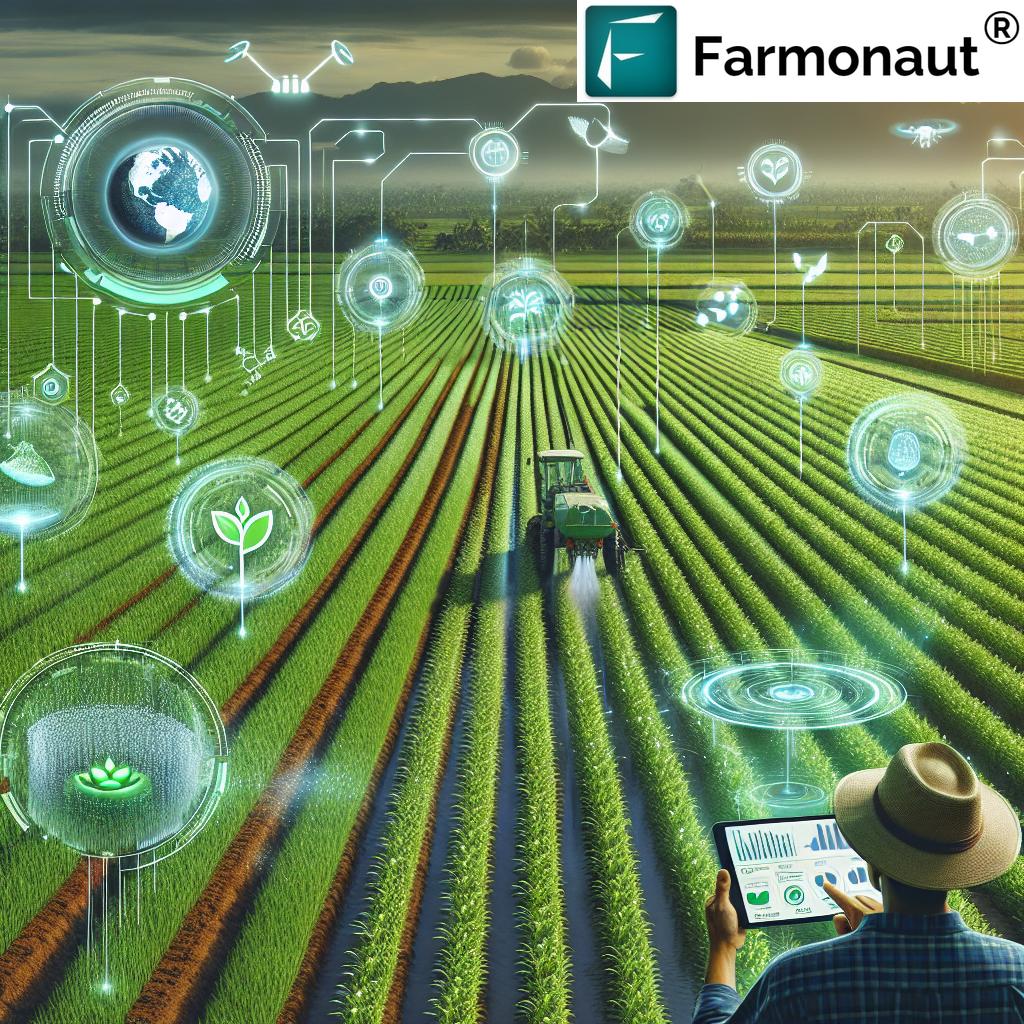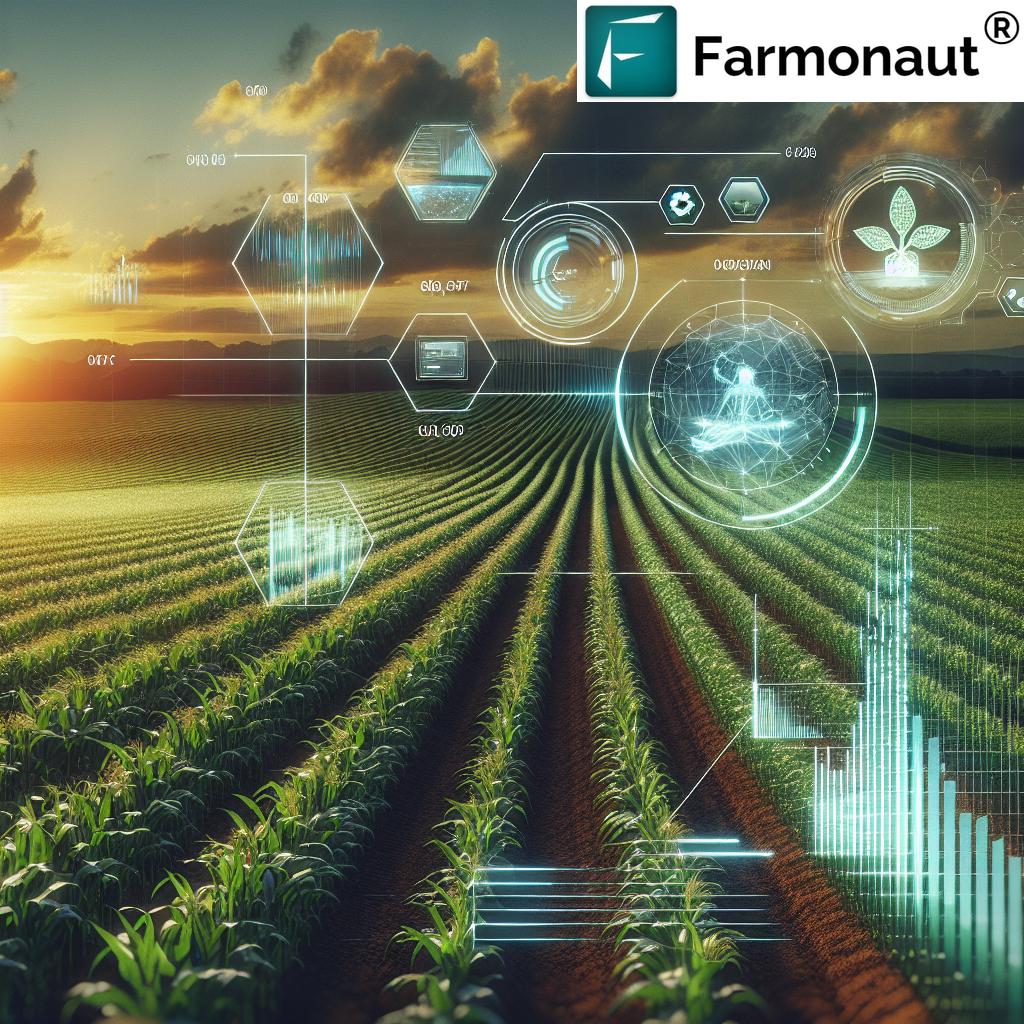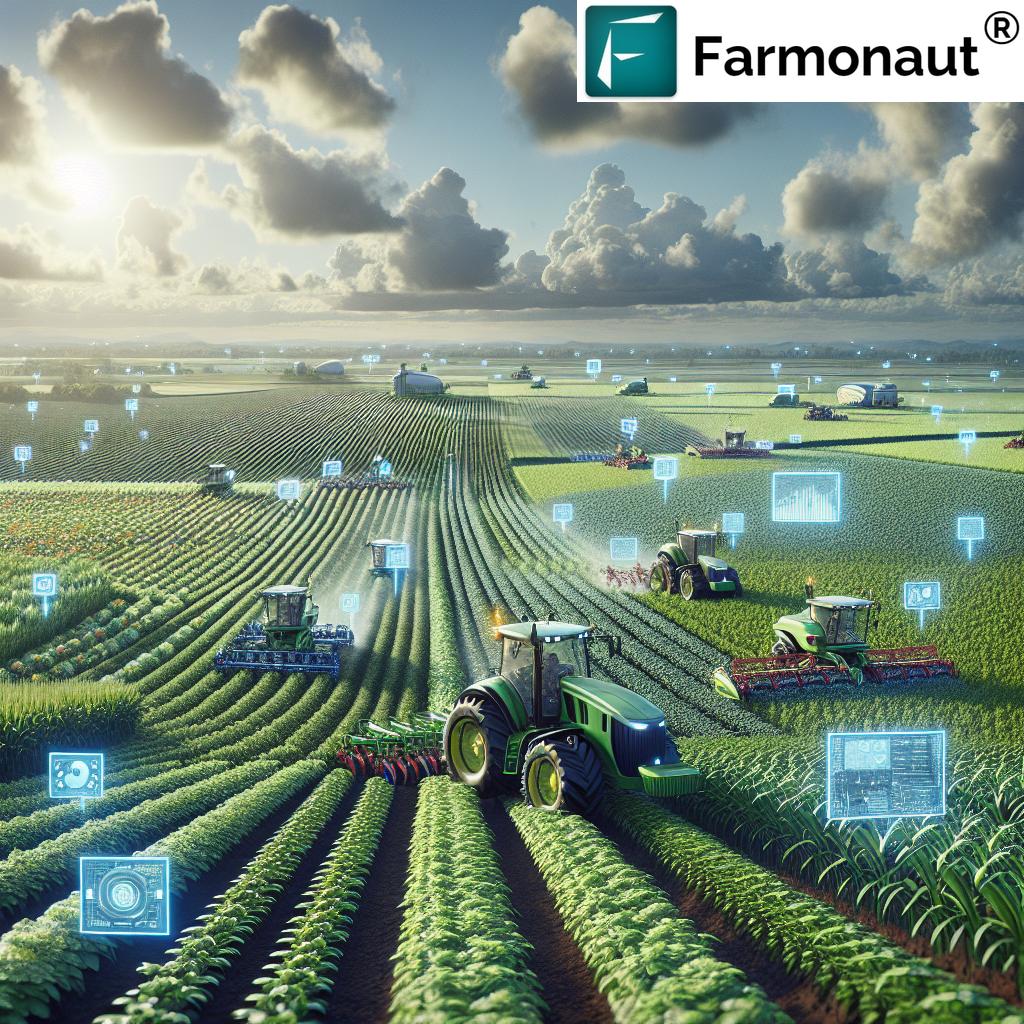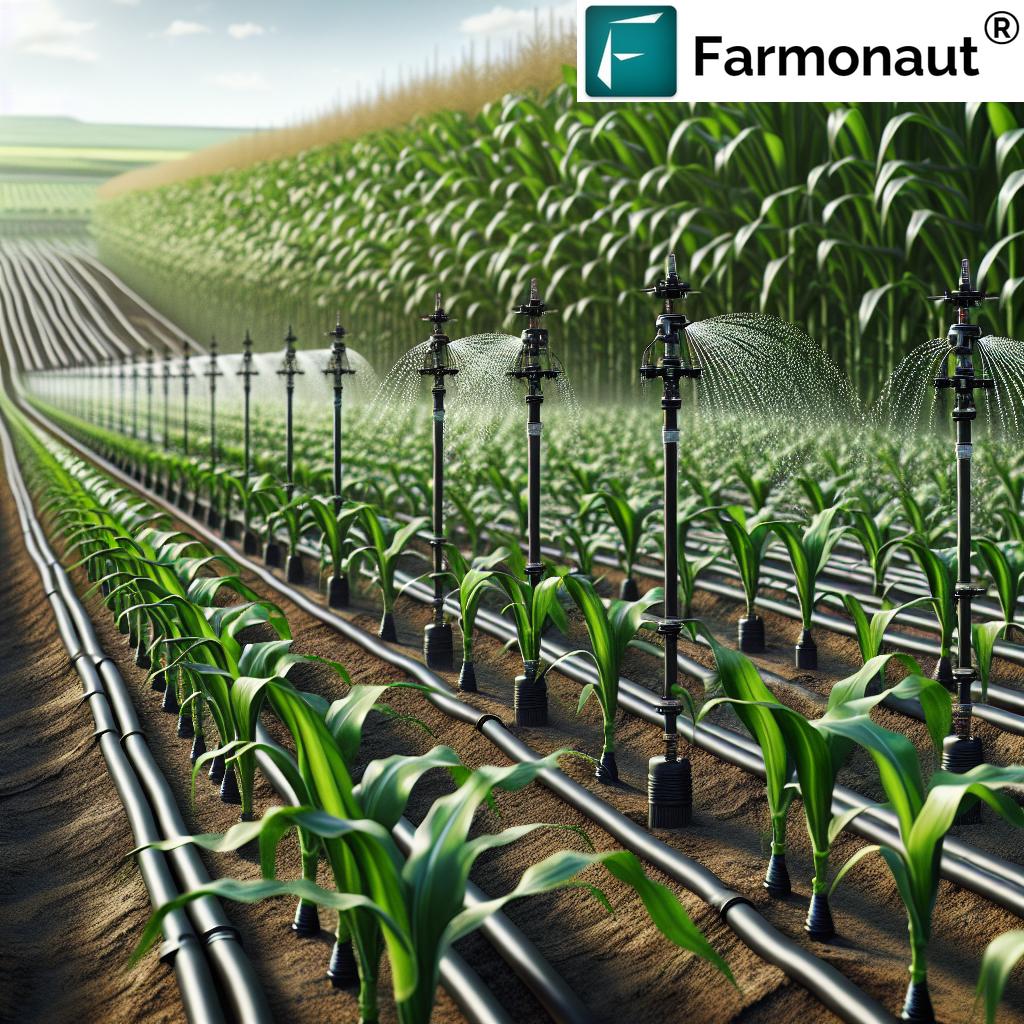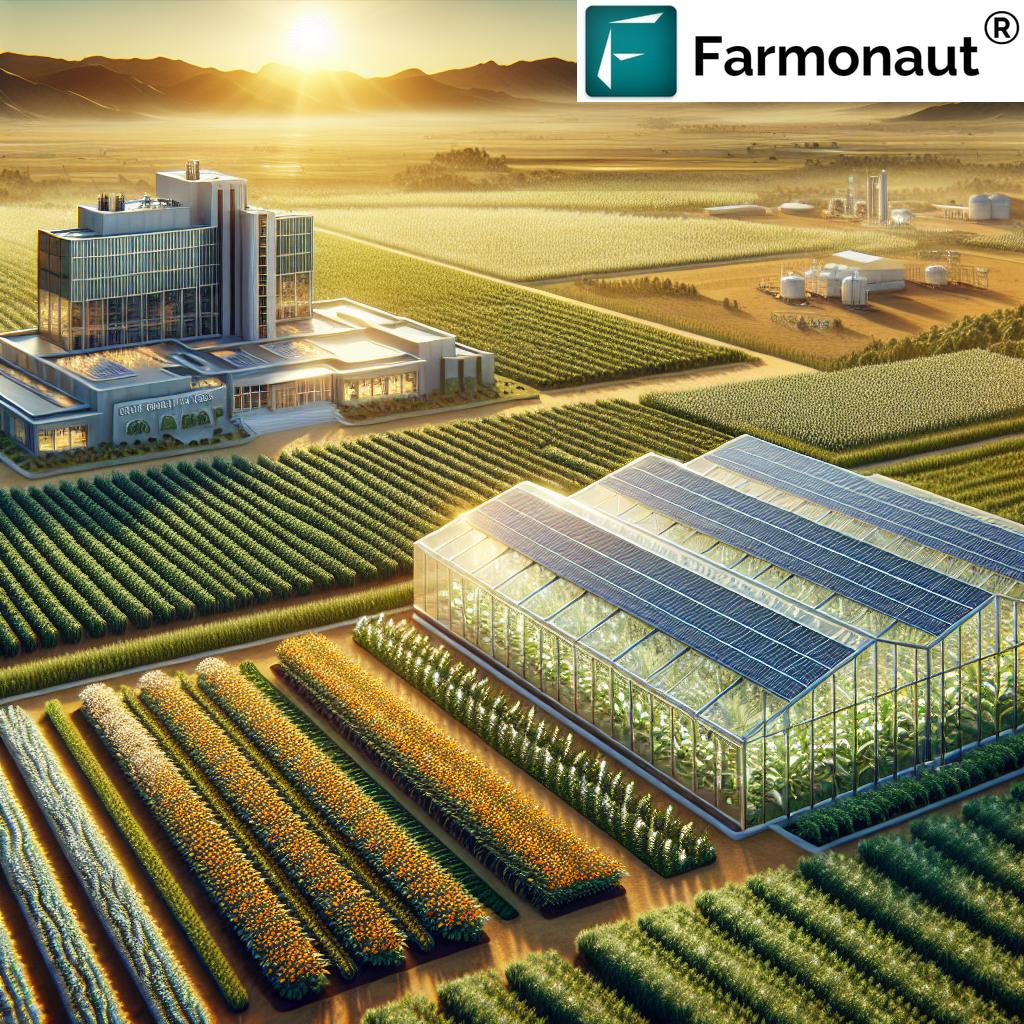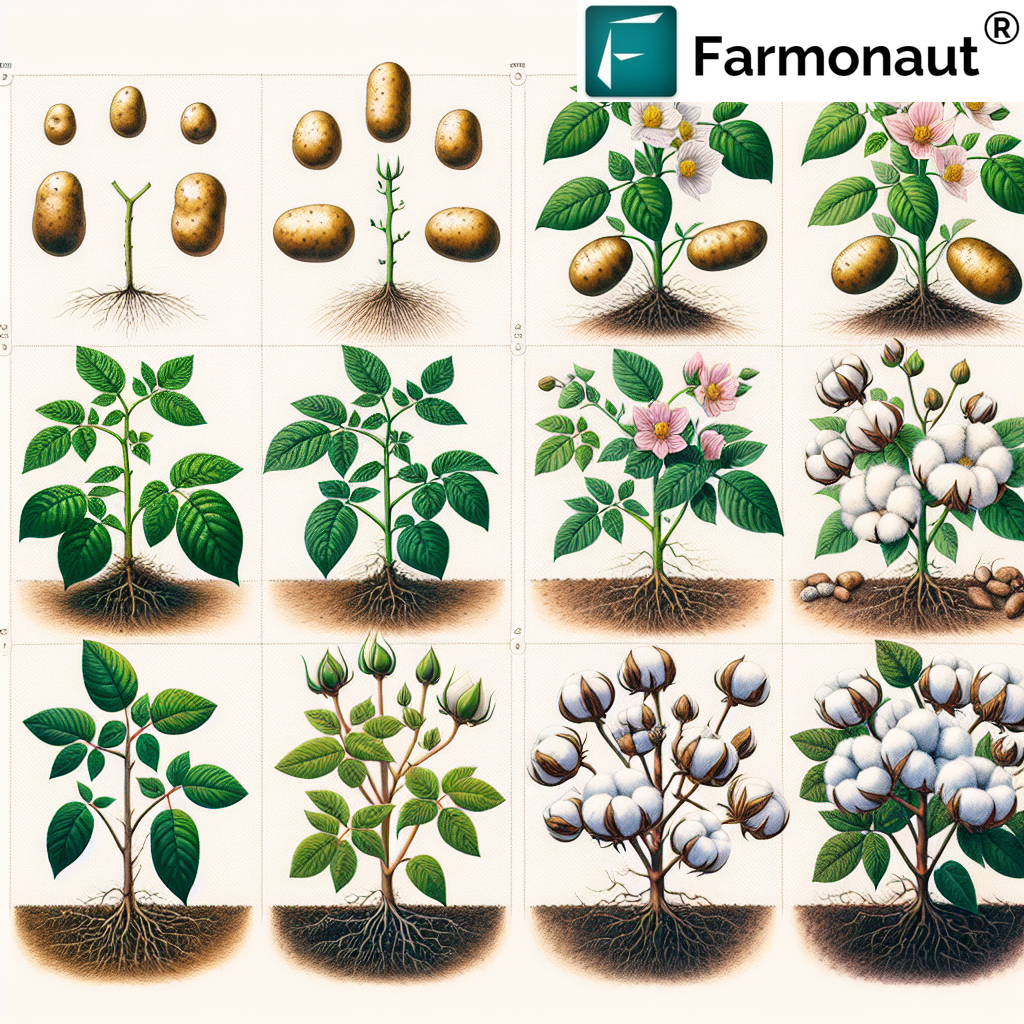Table of Contents
- Introduction
- Understanding Variable Rate Technology (VRT)
- How Variable Rate Fertilizer Improves Soil Health
- Economic & Environmental Benefits of VRT
- Implementing Variable Rate Fertilization: Steps and Best Practices
- Leverage Farmonaut Solutions for Precision and Sustainability
- Impact of Variable Rate Fertilizer vs. Conventional Fertilizer on Soil Health and Sustainability
- Frequently Asked Questions (FAQ)
- Conclusion
Benefits of Variable Rate Fertilizer for Soil Health
In modern agriculture, the health of our soil represents the cornerstone of both productivity and environmental stewardship. With the adoption of Variable Rate Technology (VRT), we are ushering in a new era of precision fertilizer application—one that secures not only optimally high crop yields but also ensures the long-term sustainability of our farming systems. By tailoring the application of fertilizers to the precise, real-time nutrient needs of each field zone, VRT is revolutionizing how we think about soil health improvement, resource efficiency, and sustainable farming practices.
In this comprehensive guide, we will discover how variable rate fertilizer transforms soil management, minimizes environmental risks, and enables healthier, more productive fields. We will explore the science behind VRT, the practical benefits for farmers and agronomists, and how leading solutions such as Farmonaut’s advanced agricultural technology make these innovations accessible and actionable.
Understanding Variable Rate Technology (VRT)
Variable Rate Technology (VRT) empowers us to customize our fertilizer application with unprecedented precision. VRT leverages advanced agricultural technology—including GPS mapping, remote sensing through satellites (like Farmonaut provides), and soil sensors—to apply varying amounts of fertilizer across different field zones. This approach is rooted in detailed data collection, robust analysis, and real-time execution.
Instead of applying fertilizers uniformly, we use VRT to analyze factors such as soil nutrient levels, moisture content, crop health, and historic yield maps. This enables us to define management zones within our fields. Each zone then receives a customized application—delivering only the nutrients needed, precisely when and where they’re most beneficial. This reduces waste, boosts efficiency, and supports optimal soil health for crop growth.
- GPS and Soil Sensors: Allow detailed mapping of soil properties, identifying variability in nutrient and moisture levels across the field.
- Prescription Maps: Created using analytical software, these maps direct precision machinery or applicators to deliver fertilizers at tailored rates.
- Data Integration: By uniting various data sources (satellite imagery, soil samples, weather data), we develop a holistic understanding of our field’s requirements.
Through this approach, variable rate fertilizer application marks a departure from traditional uniform methods, helping us optimize soil nutrient content and improve long-term field productivity. Leading-edge tools such as Farmonaut offer accessible, subscription-based solutions that integrate these technologies into daily farm management, putting the power of VRT into every grower’s hands.
How Variable Rate Fertilizer Improves Soil Health
The benefits of variable rate fertilizer application are myriad, with positive impacts on nearly every facet of soil health improvement. Let’s examine the core benefits in detail:
“Precision fertilizer application increases crop yields by 15-20% while promoting long-term soil sustainability.”
Enhanced Nutrient Management in Agriculture
One of the fundamental advantages of variable rate fertilizer application is its ability to support precision nutrient management in agriculture. In traditional, uniform systems, some field areas may be over-fertilized, while others receive less than they need, causing nutrient imbalances. These imbalances can impair microbial activity, reduce soil fertility, and even harm our crops.
With VRT, we tailor fertilizer applications to the specific requirements of each zone. This ensures nutrient levels in our soil are maintained within optimal ranges, supporting healthy microbial cycling and balancing fertility. A balanced nutrient profile promotes better crop growth and reduces environmental losses.
- Optimizing Nutrient Content: We accurately match nitrogen, phosphorus, potassium, and other nutrients to what’s needed for each crop segment.
- Dynamic Adjustments: As crop stages or field conditions change, applications can be modified quickly using prescription maps.
- Reduced Over- or Under-Application: By delivering nutrients more precisely, we prevent excessive buildup in some zones and deficiencies in others, improving efficiency and reducing costs.
Farmonaut’s satellite imagery and AI-driven insights make this easy: By monitoring soil and crop health at scale, we get actionable data to fine-tune our fertilizer strategy and achieve superior results.
Reducing Soil Erosion with Precision Application
Another pivotal benefit of using variable rate fertilizer relates to reducing soil erosion. Over-application of fertilizer—especially on sloped or erosion-prone areas—increases the risk of nutrient runoff and subsequent loss of soil structure.
How does VRT help?
- Precision Application: We deliver fertilizer only where it’s needed, in the required amounts, minimizing excess that could be lost to runoff.
- Synergy with Conservation Tillage: Research shows that combining VRT with conservation tillage can reduce runoff and evaporation by over 60%—protecting both our topsoil and water resources.
- Stable Soil Structure: With lower risk of nutrient and soil losses, we enhance aggregation and overall soil stability.
Reducing fertilizer-induced runoff is also vital for water health downstream, substantially lowering the risk of aquatic pollution and supporting broader environmental sustainability goals.
Promoting Organic Matter in Soil
Soil organic matter is essential for long-term fertility, supporting nutrient retention, water holding, and microbial activity. VRT strengthens our ability to manage organic matter in soil effectively:
- Targeted Applications of Organic Fertilizers: With VRT, we can precisely apply compost, manure, or other amendments only where needed most, preventing hotspot buildup or neglect.
- Enhancing Soil Structure: Regular, matched incorporation of organic matter improves soil aggregation, porosity, and resilience against drought and compaction.
- Microbial Support: Balanced nutrient inputs maintain thriving microbial populations that drive decomposition and cycling.
Monitoring organic matter content with satellite-based farm management platforms like Farmonaut allows us to track these improvements over time, making data-driven decisions that build the sustainability and performance of our fields year after year.
Minimizing Soil Compaction through VRT
Soil compaction restricts root growth, slows water infiltration, and reduces oxygen availability—all diminishing crop performance and soil health. VRT aids in minimizing compaction by:
- Reducing Machinery Traffic: When we optimize our fertilizer applications, we minimize unnecessary passes across the field—meaning less compaction from heavy equipment.
- Efficient Input Distribution: By delivering nutrients precisely, there’s seldom a need for repeated remedial treatments, further reducing field traffic.
- Enhancing Soil Porosity: Less compaction translates into improved water movement, root expansion, and aeration.
This benefit is especially amplified when coupled with large-scale digital farm management tools, which coordinate overall field operations and help us schedule interventions for minimum impact and maximum yield.
Soil pH Management and Targeted Amendments
Maintaining the optimal soil pH is essential for nutrient availability and healthy microbial activity. When pH falls out of range, many nutrients become either unavailable or even toxic to plants.
- Targeted pH Amendments: Using VRT, we can apply agricultural lime, gypsum, or sulfur in exactly the right amounts and in specific zones that require correction.
- Supports Crop Growth: When amendments are applied zone-by-zone based on data, all plants enjoy conditions ideal for nutrient uptake and healthy growth.
- Enhances Microbial Health: Optimal pH conditions foster diverse and active soil microbiomes necessary for organic matter breakdown and nutrient cycling.
Regular soil pH mapping, analyzed and visualized via precision platforms such as Farmonaut, transforms how we manage both soil fertility and crop yield.
Economic & Environmental Benefits of VRT
Beyond the direct soil health improvement, integrating variable rate fertilizer application has meaningful economic and environmental advantages:
- Reduced Input Costs: By applying fertilizer only where and when it’s needed, we commonly see a 15-25% reduction in nutrient input costs (moldstud.com).
- Yield Optimization: Variable rate technology not only saves resources—it frequently boosts cumulative crop yield by 5-10% or more through tailored management.
- Resource Efficiency: With the power of prescription mapping (Farmonaut’s API for satellite and weather data helps automate this), we minimize excess, lower waste, and ensure optimum resource use.
- Environmental Gains: Reduced runoff diminishes waterway pollution risks, while strategic fertilizer deployment cuts nitrous oxide emissions and supports carbon footprint reduction. Integrating Farmonaut’s Carbon Footprinting module helps us measure and reduce emissions across our operations.
- Compliance and Traceability: Tools like Farmonaut’s blockchain-based product traceability add transparency, critical for supply chain accountability and meeting regulatory or market standards.
Altogether, VRT supports us in optimizing crop yields without sacrificing long-term soil productivity or ecological responsibility.
Implementing Variable Rate Fertilization: Steps and Best Practices
To fully capture the benefits of variable rate fertilizer for soil health, a systematic approach to implementation is essential. Here’s how we can transition smoothly to precision fertilizer practices:
- Soil Testing: Begin with comprehensive soil sampling across the entire field. Analyze for nutrient levels, pH, and organic matter content—the bedrock of management zone design.
- Data Analysis & Mapping: Use analytic software—or advanced tools such as Farmonaut’s web, Android, or iOS app—to layer and interpret field data, including satellite imagery, yield records, and sensor inputs.
- Create Prescription Maps: Define management zones within the field and generate zone-specific fertilizer prescriptions to direct applicators.
- Invest in VRT-Compatible Equipment: Ensure field equipment can process and implement prescription maps (Farmonaut’s API allows seamless integration of satellite insights into third-party equipment).
- Monitor, Adjust, and Evolve: Track crop performance and soil health using recurring data streams from satellites and field sensors (or Farmonaut’s real-time dashboard). Make in-season adjustments to continuously improve outcomes.
For developers and agritech integrators aiming to embed this data-driven precision into their platforms, Farmonaut’s developer documentation provides easy API access to vital satellite and weather datasets.
Leverage Farmonaut Solutions for Precision and Sustainability
As VRT adoption accelerates, so does the demand for practical, scalable technology. Farmonaut rises to this challenge with a suite of satellite-driven, AI-powered solutions:
- Satellite-Based Crop & Soil Health Monitoring: Farmonaut’s platform gives us up-to-date NDVI and soil moisture maps for timely decision making and early issue detection, supporting sustainable input use.
- AI-Powered Advisory (Jeevn AI): Personalized recommendations help us refine crop management and input scheduling, integrating weather and field data for the best results.
- Blockchain Traceability: For those needing verified product origin and chain-of-custody (e.g., food or textiles), Farmonaut adds transparency and boosts market trust.
- Fleet and Resource Management: Especially for enterprises managing multiple fields, Farmonaut’s fleet management module ensures efficient logistics, reducing operational costs and field compaction risk.
- Carbon Footprinting: Sustainability-minded growers benefit from real-time footprints for compliance and environmental strategy.
- Scalable for All: Whether we are smallholders, large agribusinesses, or government agencies, Farmonaut’s modular services are adaptable—offered by affordable subscription and API.
The Farmonaut ecosystem is designed not just for growers seeking immediate results but for those committed to long-term soil health improvement and field sustainability.
Impact of Variable Rate Fertilizer vs. Conventional Fertilizer on Soil Health and Sustainability
| Fertilizer Application Method | Soil Health Indicator | Estimated Improvement (%) | Environmental Impact |
|---|---|---|---|
| Variable Rate | Nutrient Balance | +25% | Reduced runoff by up to 40%, supports water health, optimizes resource use |
| Conventional (Uniform) | Nutrient Balance | Baseline (±0%) | Higher risk of runoff, inefficient resource use |
| Variable Rate | Organic Matter Content | +15% | Promotes organic matter buildup, enhances soil structure |
| Conventional (Uniform) | Organic Matter Content | ±0% | Little impact, organic matter often inconsistently managed |
| Variable Rate | Microbial Activity | +20% | Promotes beneficial microbial cycling, reduces chemical stress |
| Conventional (Uniform) | Microbial Activity | ±0% | Can foster imbalances, risk of microbial suppression with overuse of chemical fertilizers |
| Variable Rate | Environmental Impact | Reduced carbon footprint by 10-20% | Minimizes greenhouse gas emissions, complies with sustainable farming standards |
| Conventional (Uniform) | Environmental Impact | Baseline/Neutral | Potential for pollution, higher emissions |
Frequently Asked Questions (FAQ)
What is Variable Rate Technology (VRT) in agriculture?
Variable Rate Technology refers to a precision farming method where the amount and type of fertilizer applied across a field is varied based on detailed, zone-specific soil and crop data, rather than spreading the same amount everywhere. This approach improves resource use efficiency, soil health, and yields.
How does variable rate fertilizer improve soil health?
Variable rate fertilizer application balances nutrient levels across the field, enhances organic matter, boosts beneficial microbial activity, reduces chemical buildup, and minimizes nutrient runoff and soil erosion.
Can VRT help reduce farming costs?
Yes! By applying precisely the right amount of inputs only where needed, farmers can cut fertilizer costs by 15-25%, reduce unnecessary passes with machinery, and avoid wasted resources.
How do I start implementing VRT on my farm?
Begin with detailed soil and crop health mapping, create management zones, develop customized prescription maps, and use compatible application equipment. Tools like Farmonaut make this process accessible with satellite imagery and data-driven recommendations you can access via the web or mobile app.
What’s the environmental impact of VRT?
VRT minimizes fertilizer runoff to water bodies (protecting aquatic life), reduces greenhouse gas emissions, and decreases the farm’s carbon footprint, supporting long-term environmental and regulatory compliance.
Can variable rate technology be scaled for large commercial farms?
Absolutely. VRT, especially when powered by platforms like Farmonaut, is scalable for all sizes of farms—from smallholder plots to multinational agribusinesses.
Does Farmonaut offer solutions for digital traceability and environmental compliance?
Yes. Farmonaut’s Product Traceability system uses blockchain to secure and verify every step of the supply chain, while the Carbon Footprinting module tracks emissions for environmental reporting and sustainable branding.
Conclusion: VRT and the Future of Soil Health
The journey towards sustainable agriculture and optimal soil health is accelerated by implementing variable rate fertilizer technology. By combining the insights of modern precision farming methods—from GPS and sensors to satellite imagery and AI—with tailored input delivery, we unlock a future of resilient, productive, and environmentally conscious farming.
VRT addresses every critical aspect of soil health: enhancing nutrient management, reducing erosion, promoting organic matter, minimizing compaction, and allowing precise pH adjustments—while simultaneously delivering economic benefits and environmental responsibility. Leaders in precision like Farmonaut ensure this technology is accessible to all, no matter the farm size or location.
As global demand for food and natural resources grows, the smart use of advanced agricultural technology like VRT is essential for optimizing crop yields and promoting the long-term vitality of our soils. Let us commit to practices that not only nurture our fields today but secure their health for generations to come.
Embrace precision. Cultivate sustainability. Power your soil’s future with variable rate fertilizer—powered by intelligence, technology, and heart.






